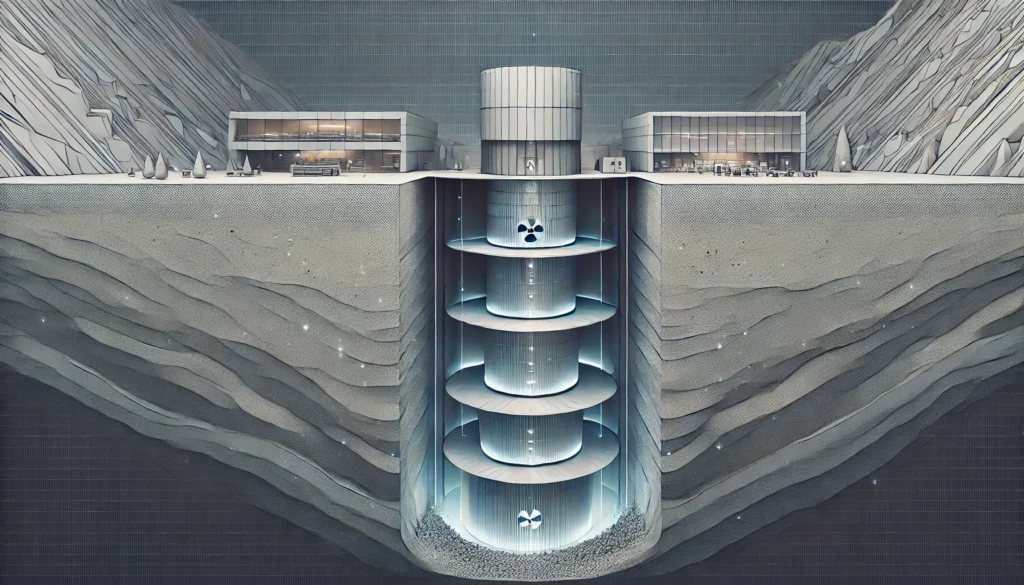
In a bold move to reinvent nuclear power, Deep Fission, a startup based in Berkeley, California, is taking its reactors deep underground. The company, led by a father-daughter team, Richard and Elizabeth Muller, has raised $4 million in a pre-seed funding round to pursue this audacious idea.
The concept is simple yet groundbreaking: build a small nuclear reactor just 30 inches wide and lower it into a mile-deep drill shaft. This approach could sidestep the immense costs and safety concerns that have long plagued traditional nuclear power.
The Problem With Conventional Nuclear Power
Nuclear energy has always promised a future of virtually limitless power. However, the high costs of safety measures and public opposition have stalled its progress. Traditional reactors require enormous containment structures made of thick, reinforced concrete and stainless steel to protect against potential accidents.
These structures, along with the extensive cooling systems and other safety features, make nuclear plants expensive to build and maintain. For instance, the planned Hinkley Point nuclear plant in the UK has faced years of delay and massive cost overruns. At an estimated 50 billion euros, the plant built by French energy company EDF looks set to become one of the most expensive buildings in history.
And although modern nuclear reactors are considered very safe, several historic catastrophic incidents dramatically altered public perception and policy.
The first major blow came with the 1979 Three Mile Island accident in Pennsylvania. A partial meltdown of a reactor core led to the release of a small amount of radioactive gases. While the immediate health impacts were minimal, the event sparked widespread fear and skepticism about the safety of nuclear power. Just seven years later, the Chernobyl disaster in the Soviet Union sent shockwaves across the globe. The catastrophic explosion and subsequent fire released massive amounts of radioactive material, leading to thousands of deaths and long-term health problems.
The Nuclear Slowdown
Chernobyl became the global symbol of the potential dangers of nuclear power. In response, many countries halted or slowed their nuclear programs. Such mishaps triggered a growing anti-nuclear movement, fueled by concerns over safety, waste management, and nuclear proliferation.
Public protests and political lobbying led to stricter regulations and, in some cases, outright bans on new nuclear construction. Germany, for example, decided in 2011 to phase out all its nuclear reactors by 2022. The decision was heavily influenced by the Fukushima Daiichi nuclear disaster in Japan that year. An earthquake and tsunami triggered a meltdown in three reactors at the Japanese power plant, reigniting fears about the safety of nuclear power plants, especially in geologically unstable areas.
The three last remaining nuclear power plants in Germany were finally taken offline on 15 April 2023. The Atomausstieg’s final step marked the end of a process that had been going for over two decades and involved almost all of Germany’s main political parties. Much of Germany’s nuclear energy has been covered by huge investments in solar energy. However, renewable energy cannot wholly replace both nuclear energy and fossil fuels, the latter providing baseload power that stabilizes the grid.
A Radical Redesign for Safety and Cost

Deep Fission’s approach proposes to bypass these barriers by utilizing the natural conditions of a mile-deep underground environment. At such depths, the weight of the water column alone provides the necessary pressure for the reactor to operate, eliminating the need for large, costly pressure vessels. Encased in solid rock, the reactor doesn’t require a traditional containment building. And should a worst-case scenario occur, the plan is simple: fill the shaft with concrete and seal it off.
The reactor design itself is a simplified version of a conventional pressurized water reactor (PWR). It operates at standard temperatures and pressures but has almost no moving parts apart from remotely controlled control rods. This minimizes the chance of mechanical failure. Moreover, the reactor’s self-limiting design means it automatically shuts down if it starts to overheat.
Deep Fission’s founders are clear about their mission. They aim to make nuclear power a viable option for a range of new applications, from powering remote communities to supplying energy to AI data centers.
“Climate change has accelerated the need for clean energy, and nuclear must be cheaper in order to compete with coal and natural gas,” said CEO Elizabeth Muller. “We’ve innovated beyond other reactor designs and engaged early with the Nuclear Regulatory Commission to bring this vision to life.”
Still Early Stages
The startup has already made significant strides. It has completed a conceptual design, submitted a regulatory engagement plan, and held a design review meeting with the U.S. Nuclear Regulatory Commission. The next steps include further regulatory approval and identifying the best geological site for a pilot plant.
While the technology is still in its early stages, Deep Fission believes it could provide a cost-effective, scalable solution to the world’s energy needs. The startup’s efforts come amid a broader resurgence of interest in nuclear power as a clean energy source. Nuclear reactors are increasingly under consideration for powering data centers, industries, and remote areas, all looking to reduce their reliance on fossil fuels.
There are challenges, of course. The technology must prove itself not only in terms of safety and efficiency but also in public perception. The idea of burying nuclear reactors a mile underground is as controversial as it is innovative. Yet, Deep Fission’s approach has attracted investors who see potential in the startup’s ability to rethink nuclear power fundamentally.
“We invested in Deep Fission because they are engineering a way for nuclear power to be exceptionally safe, cost-effective, and reliable,” said Joe Lonsdale, managing partner at 8VC, the venture capital firm leading the funding round. “With global demand escalating, we need more options.”


